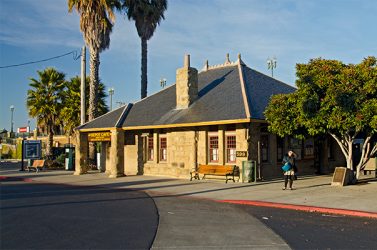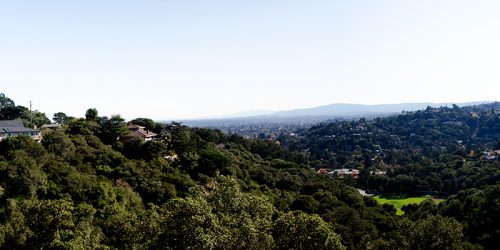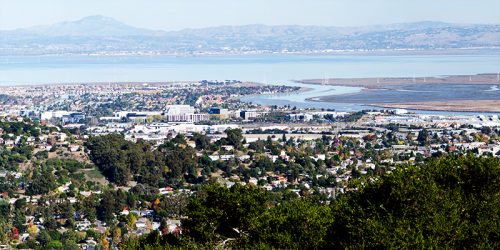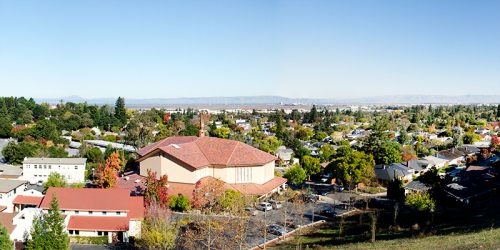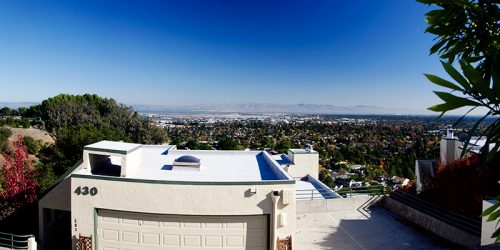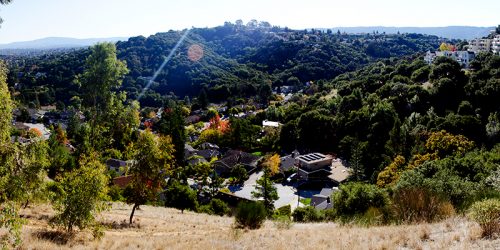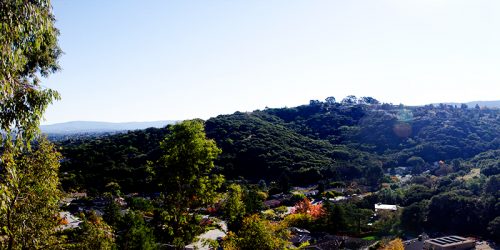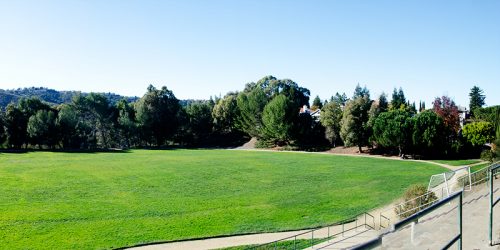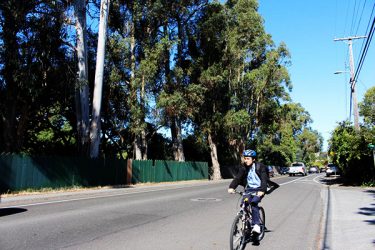A recent NextDoor comment asserted the Council broke the law regarding how our train depot was treated in the Transit Village/Trestle Apartment project. Because the depot is on the National Register of Historic Places development around it must, by law, protect its historic status.
While people are entitled to hold whatever opinion they wish, and assert its accuracy however strongly they wish, the definitive nature of the assertion gave me pause. I thought it would be educational to investigate how the depot’s historic status was treated during the project’s design phase.
The historical preservation laws work by appointing a third-party who is committed to maintaining the historic nature of a site as a guardian. Any development impinging on an historic site must be approved by the guardian. I learned the City and the developer (Legacy Partners) did follow the law, obtaining approval from the guardian organization (South Bay Historical Railroad Society, Inc.). In fact, they either solicited or simply incorporated feedback from the Society in the project’s design. You can see this spelled out in a March 11, 2010 letter to the City and the San Mateo County Transit District (which owns the property that was developed):
train-depot-letterThis doesn’t mean the result was perfect. For one thing no one appears to have challenged the Society’s decision, so it wasn’t tested in court. On the other hand, the lack of a challenge is supportive of the law being followed. In addition, I find it hard to believe the Society would’ve agreed to something that fundamentally violated the depot’s historic nature.
But that still leaves an interesting question. Why such a strong belief that the law wasn’t followed? That’s something I’ve seen many times over my years as an elected official. It’s a cop out to attribute it to simple ignorance. Most people who make such assertions have at least some familiarity with the law involved. So why does this type of allegation get made as frequently as it does?
I suspect it’s because we all start with the belief that the law is or should be “simple”, as in easy to understand and apply. It’s just a collection of “Thou Shalts” and “Thou Shalt Nots”, after all, right?
The problem is, it’s not. There are a lot of gray areas…by design.
I tend to think of these things visually. Here’s one way of looking at this that I’ve found helpful. The light blue areas define what’s allowed while the brick red areas define what’s forbidden:

More of the diagram is blue than red because our legal system aims to preserve individual freedom. More importantly, most of the forbidden areas blend into the allowed areas; there are few sharp borders. And, even in some more-or-less forbidden areas there are carve-outs that are allowed (and vice versa).
That may explain why people mistakenly conclude something’s against the law. It’s hard to keep track of that many fuzzy boundaries! Instead, we tend to remember the central points which define what’s allowed and what’s forbidden.
But why is the law as complex as this picture implies? Why can’t it be simple, the way we all expect it to be?
I think it’s the price of preserving individual freedom. If we want to allow individuals the freedom to choose how to live their lives as much as we reasonably can – surely a valid and noble goal! — we must allow as many people as possible to make choices. Otherwise we’re only preserving choice for an elite, which isn’t freedom.
And the larger we let the range of choices be and the more people we have making choices the more those choices potentially conflict with each other.
Which puts the continued stability of the community at risk. If enough people are angry or upset too often about their individual choices colliding with legal barriers or someone else’s choices the system will collapse. That’s not in anyone’s interest.
So keeping conflicts and collisions with the law to a tolerable level is important. It’s done by striking balances between competing interests…and it’s that multiplicity of balances which requires the law to be as nuanced as it is. Even a “simple” legal system involves a lot of dimensions when it must serve the needs of a large and diverse community.
Here’s a brief animation which tries to summarize and explain all of this:
By the way, I am by no means asserting that the law is perfect, even as regards balancing competing interests. Because in our society laws are created through a political process they are subject to all of the forces that pervade politics. Some of those are good — vesting ultimate authority in citizens, through plebiscites and elections — and some not so good (e.g., the pernicious impact of money, which gives individuals or smaller groups of people a “voice” beyond their headcount). But that’s a subject for a different post :).
I’m also not suggesting the community has to sit by passively and let decisions be made by their elected representatives. One of the implications of all that blue area in the first diagram is that there are a lot of places communities can land on any given decision and still be compliant with the law.
Consider the following, where the yellow starbursts are the actual decisions made by local government and the blue ones are things they could’ve done instead. It’s perfectly reasonable — and lawful — for a community to want fewer yellow starbursts and more blue ones. Whether by lobbying their elected officials or replacing them at the polls.

In fact, that’s the essence of politics as a tool for communities to manage and regulate themselves.
